Pictures with character
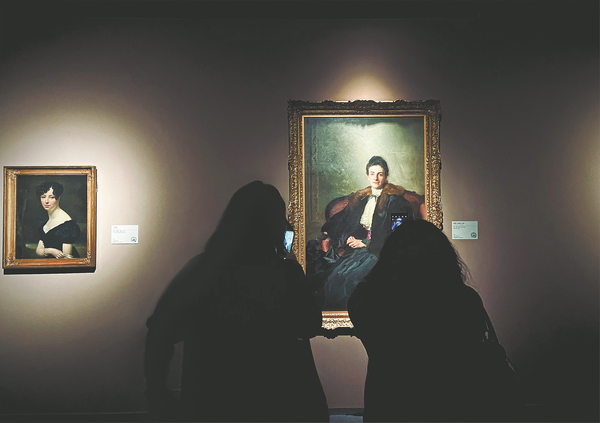
Faces of Time showcases Western portraiture in Beijing. LIN QI/CHINA DAILY
Fine examples of Western portraiture, spanning five centuries and featuring prominent historical figures, are on show in Beijing, Lin Qi reports.
Napoleon Bonaparte (1769-1821) once said: "Nobody knows if the portraits of the great men resemble them, it is enough that their genius lives there."
The French general and emperor obviously had a good sense of the importance of ordering portraiture to enhance his image as someone brilliant, powerful and superior. He would have felt satisfied that his dozen portraits, which remain intact in public and private collections around the world, have ensured his profile as one of history's most accomplished figures endures today.
Now four of those portraits, vividly presenting his masculinity and heroism from different perspectives, are on show at Faces of Time, a Beijing exhibition of Western portraiture with works spanning five centuries at the National Centre for the Performing Arts. The exhibition is set to run until Nov 12.
On show are 56 fine figure paintings and portraits from the collection of the Tokyo Fuji Art Museum of Japan.
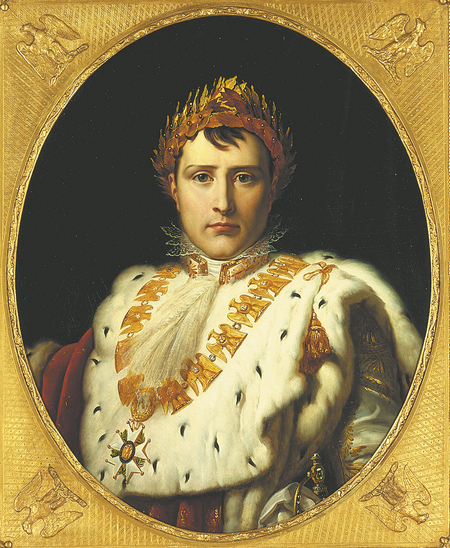
Portrait of Napoleon I, by the workshop of Francois Gerard. LIN QI/CHINA DAILY
Napoleon is the most portrayed figure at the exhibition, with the four paintings produced by different reputed European artists. This includes one from 1810 showing a serious Napoleon reading a letter by candlelight, one of the several portraits he commissioned from Pietro Benvenuti, a successful Italian painter.
Paintings depicting Napoleon dressed in his coronation finery, commissioned to commemorate his ascension to emperor, mark a classic theme among his portraiture. The exhibition shows two such, significant, examples: one, a side profile, by the workshop of Anne-Louis Girodet-Trioson, and the other, a front-facing piece, by the workshop of Francois Gerard.
The latter resembles another portrait, a full-body work also by Gerard, which Napoleon favored so much that he commissioned reproductions of it as gifts for his prominent officials, as well as an exquisite woven tapestry copy, which now resides in the collection of the Metropolitan Museum of Art in New York.
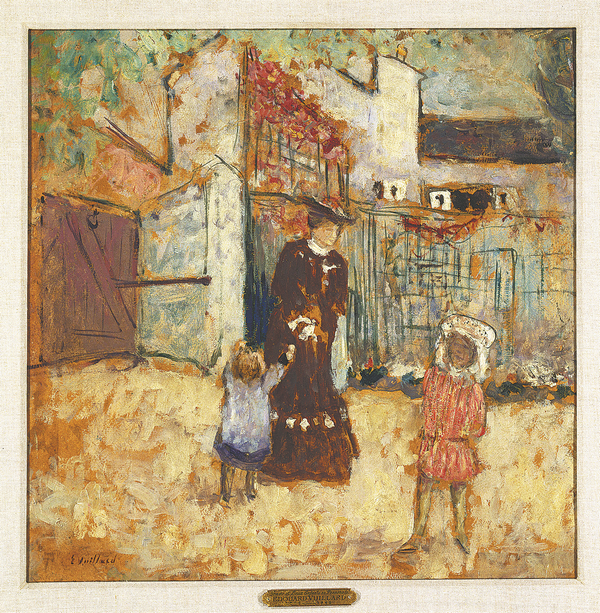
Woman and Children, by Edouard Vuillard.LIN QI/CHINA DAILY
Artistic interpretations
However, the most eye-catching Napoleon portrait at the show is, unarguably, Bonaparte Crossing the Great St. Bernard, also known as Napoleon Crossing the Alps, which is attributed to the workshop of Jacques-Louis David.
The work depicts the famed general in his signature uniform, sitting comfortably and calmly on a rearing horse, against a backdrop of snowcapped mountains.
It was half realistic, inspired by a successful military campaign led by Napoleon himself in 1800.
While created with a heavy sense of idolatry — the painting shows one of his hands pointing to the sky and his bright red robe is whipped by the wind — it accentuates the image of a youthful figure with a strong will, a well-defined physique and sound judgment.
David was a celebrated painter at the time who trained a number of great students including the aforementioned Gerard and Jean-Auguste-Dominique Ingres, whose painting Jupiter and Thetis is also on show.
David's famous works include The Death of Marat, and yet it is, perhaps, his depictions of Napoleon that have made his name familiar to people around the world. David was believed to be a fervent admirer of Napoleon and once said, after a meeting with the general, "what a beautiful head he has! It is pure …beautiful like (an) antique".

Girl's Head Turned Left, by Gustav Klimt.LIN QI/CHINA DAILY
In 1801, David was appointed by Napoleon as his "first painter".Afterward, he created the classic painting, The Coronation of Napoleon. He completed several versions of Bonaparte Crossing the Great St. Bernard, including the one in the Tokyo Fuji Art Museum collection.
The technical refinement and timeless appeal that mark the Napoleon portraits, and other paintings on show, are big attractions of the exhibition; while there is another motivation, to engage the audience in a discussion about "what people look like in their own eyes, and how others see them", according to the exhibition curator Qian Qian. "Answering these questions has been at the heart of portraiture throughout centuries."
Portraits are made not only to capture a subject's appearance but also to reflect their character, social standing and virtues; portraiture shows "the image the figures wanted themselves to be documented and remembered, in the long term", Qian says.
She says artists from different periods of time continuously explored new styles and visual philosophies to present their subjects, and also to interpret the progression of history in a specific, dynamic way.
She says from Renaissance and Baroque to realism and modernism, the exhibition navigates the evolution of portrait making, from the 16th to 20th centuries, and it examines how artists conveyed their own thoughts and feelings of the time, by profiling mythological characters, historical personalities and ordinary people. "At the exhibition, people will understand the enduring vitality of portraiture at a time when photography is highly developed."
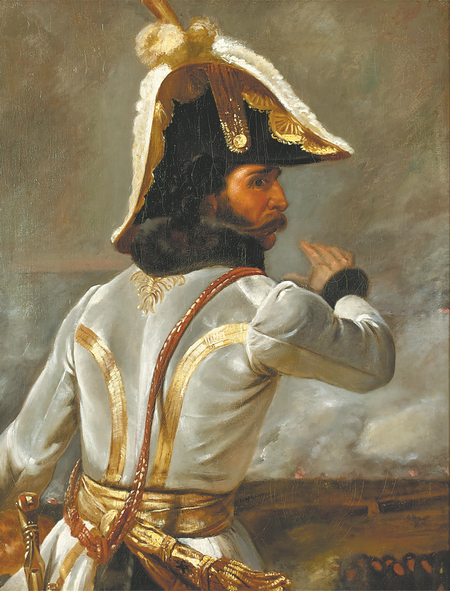
Portrait of Prince Murat, by Emile-Jean-Horace Vernet.LIN QI/CHINA DAILY
A female perspective
A section at the exhibition is dedicated to portraits of women to reflect the changes of feminine role in society.
The Renaissance era saw a number of commissions from women of the high aristocracy, posed in a graceful and yet distinct manner. Then, beginning in the late 18th century, more women from common backgrounds were depicted in scenes of daily life.
Throughout this trend, female artists tried to lend their subjects a sense of self-consciousness and independence, such as French painter and print artist Marie Laurencin, whose Two Women at the exhibition exemplifies her distinctive aesthetics in showing women with confidence, identity and self-sufficient happiness.
Xu Li, vice-chairman of the China Artists Association and an oil painter, says that, from impressionism to modernism, the works on show lead people on a journey through the centuries, where they can feel the breadth and depth of history, dig into various themes and discover clues that uncover the art of portraiture.
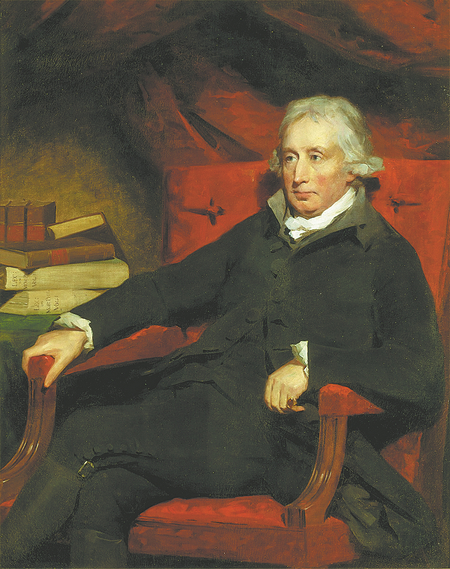
Portrait of Dr Adam Ferguson, by Henry Raeburn. LIN QI/CHINA DAILY
"It is a dialogue with the artists on the different approaches to presenting a subject, be it a member of the clergy, an aristocratic woman from the time of the Industrial Revolution, or a surreal scene from a dream," he says.
"All together, these painters from different periods of time orchestrated a touching symphony of colors and forms, and of human nature's brightest side. It is a celebration of human society in continuous progress."
An exhibition held in 2018 at the Tsinghua University Art Museum in Beijing introduced to domestic audiences the assembly of Western art at the Tokyo Fuji Art Museum. Its selection of Western portraits toured Liaoning Provincial Museum in Shenyang, Liaoning province, and the Powerlong Museum in Shanghai earlier this year.

